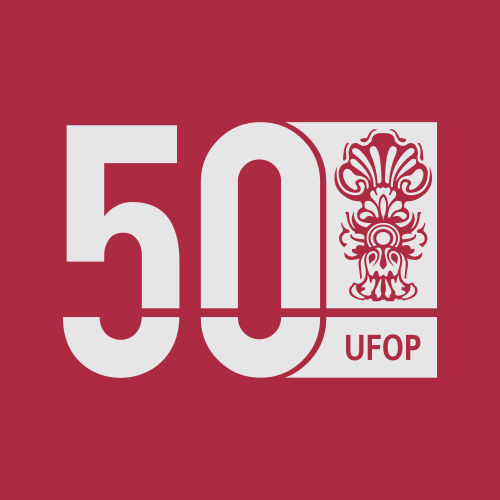预约演示
更新于:2025-12-10

Universidade Federal de Ouro Preto
更新于:2025-12-10
概览
标签
肿瘤
泌尿生殖系统疾病
内分泌与代谢疾病
化学药
关联
4
项与 Universidade Federal de Ouro Preto 相关的药物靶点 |
作用机制 DNA调节剂 |
在研适应症 |
非在研适应症- |
最高研发阶段临床前 |
首次获批国家/地区- |
首次获批日期- |
靶点 |
作用机制 DNA调节剂 |
在研适应症 |
非在研适应症- |
最高研发阶段临床前 |
首次获批国家/地区- |
首次获批日期- |
靶点 |
作用机制 DNA调节剂 |
在研适应症 |
非在研适应症- |
最高研发阶段临床前 |
首次获批国家/地区- |
首次获批日期- |
15
项与 Universidade Federal de Ouro Preto 相关的临床试验RBR-3bhkdg2
Angiotensin formulations-(1-7) its actions on physical performance and injury repair muscular
开始日期2024-03-28 |
RBR-4m9yf5k
Effect of Probiotics and Yoga Practice on Metabolic Syndrome in Climacteric Women and assessment of associated epigenetic mechanisms
开始日期2024-03-10 |
申办/合作机构 |
RBR-5wq4msw
Effect of Reiki Therapy and Inhalation of Citrus sinensis Essential Oil evaluation on Post Menopause women mental health
开始日期2024-01-02 |
申办/合作机构 |
100 项与 Universidade Federal de Ouro Preto 相关的临床结果
登录后查看更多信息
0 项与 Universidade Federal de Ouro Preto 相关的专利(医药)
登录后查看更多信息
3,420
项与 Universidade Federal de Ouro Preto 相关的文献(医药)2026-03-01·COMPLEMENTARY THERAPIES IN MEDICINE
Impact of a yoga intervention over 6, 12, and 24 months in sedentary climacteric women with metabolic syndrome
Article
作者: Guerra-Sá, Renata ; Lima, Angélica Alves ; Cota E Souza, Laura Alves
Metabolic syndrome (MetS) and climacteric symptoms often coexist in middle-aged women, increasing cardiovascular risk and reducing quality of life. Yoga shows promise for improving both metabolic and psychological outcomes, but its long-term effects in this population remain understudied. Therefore, this study evaluated the effects of a structured Shivam Yoga training program over 6, 12, and 24 months on metabolic syndrome (MetS) and menopausal symptoms in climacteric women. A total of 102 women with MetS were assigned to a yoga intervention or control group, with assessments at baseline, 6, 12, and 24 months. Primary outcomes included climacteric symptoms, anthropometric data, and biochemical and clinical parameters. The Yoga group showed a significant reduction in MetS frequency at 6 months (-20.8 %; p = 0.028) and 24 months (-46.0 %; p = 0.007) compared to controls. Fasting glucose decreased significantly at all time points (up to -21.54 mg/dL; p = 0.001), and HDL cholesterol increased at 24 months (+20 mg/dL; p = 0.001). At 24 months, waist circumference, systolic blood pressure, and diastolic blood pressure also declined significantly. Climacteric symptoms improved consistently in the Yoga group, with lower Kupperman Index scores and reductions in nervousness at every follow-up (p < 0.05). Additional improvements included insomnia, depressive symptoms, and palpitations at 6 months, with sustained reductions in palpitations (-32.2 %; p = 0.043) and arthralgia/myalgia (-46.0 %; p = 0.007) at 24 months. These findings suggest that Shivam Yoga may offer sustained benefits for both metabolic health and menopausal symptom relief in women with MetS.
2026-02-01·VETERINARY RESEARCH COMMUNICATIONS
The domestic cat microbiome: mapping knowledge gaps through scientometric analysis in feline microbial research
Review
作者: de Azevedo, Cristiano Schetini ; Young, Robert John ; Schork, Ivana Gabriela ; Passos, Luiza Figueiredo ; Goodhead, Ian
In this study, we present the first comprehensive scientometric analysis of research on the domestic cat microbiome, providing a transparent and data-driven overview of the field. We examined 282 publications on the microbiome of domestic cats (Felis catus) to uncover dominant research themes, methodological patterns, microbial niches, and knowledge gaps. Our results reveal a sharp rise in publications since 2012, with a peak in 2024, where most work is concentrated in high-income countries and driven by a small number of academic institutions. Current efforts are heavily focused on the bacterial gut microbiome, typically using genomic tools for taxonomic profiling in comparative designs. In contrast, research on other microbial communities (e.g., oral or skin), non-bacterial taxa, functional analyses, and behavioural outcomes remains scarce, with behavioural studies virtually absent. Although some studies report health-related effects, mainly positive or neutral, the functional roles of the microbiota and their possible influence on feline behaviour remain largely unexplored. By mapping these trends and gaps, our study provides a strategic framework for advancing microbiome research in domestic cats. These findings highlight priority areas and methodological opportunities that can guide future investigations, foster interdisciplinary collaboration, and ultimately deepen our understanding of the intricate links between microbial ecology, feline health, and behaviour. Studies connecting the microbiome with feline diseases, behaviour, and diet are strongly encouraged, given their high applicability to everyday animal care and management. Such research has the potential to improve both feline health and welfare, while also strengthening the human-cat bond.
2026-01-01·ARCHIVES OF MEDICAL RESEARCH
rs.11196205 Variant in the TCF7L2 Gene is Associated With an Increased Cardiovascular Risk in Individuals With Hypertension and Diabetes
Article
作者: Teixeira, Luiz Fernando de Medeiros ; Agostini, Lívia da Cunha ; da Silva, Glenda Nicioli ; Coura-Vital, Wendel ; Belo, Vanessa de Almeida ; Lima, Angélica Alves ; Coelho, Letícia Fernandes Dias ; Machado E Silva, Renata Bárbara ; Silva, Nayara Nascimento Toledo ; Lopes, Ana Cláudia Faria
BACKGROUND AND AIMS:
The interaction between genetic polymorphisms and environmental factors increases the risk of developing a diabetic phenotype which is associated with systemic arterial hypertension (SAH) and cardiovascular diseases. Variants in the T-cell factor 7-like 2 (TCF7L2) gene have been associated with type 2 diabetes mellitus (T2DM). To investigate the association of the rs.11196205 polymorphism of the TCF7L2 gene with biochemical and anthropometric parameters and cardiovascular risk indices in Brazilian patients with SAH and T2DM.
METHODS:
The polymorphism was identified by qPCR in 664 samples from four groups: Control (CG-without diabetes or hypertension), diabetic (DG-normotensive), hypertensive (HG-without diabetes) and hypertensive diabetic (HDG), using the TaqMan® system. Biochemical dosages were taken for the lipid profile: triglycerides (TG), total cholesterol, HDL, LDL, and uric acid. Anthropometric measurements were taken for body mass index (BMI), visceral fat index and cardiovascular risk calculations, including the atherogenic index of plasma (AIP), visceral adiposity index (VAI), triglyceride-glucose (TyG) index and uric acid/HDL-c ratio (UA/HDL). Bivariate logistic regression was used to identify variables associated with SAH and T2DM. Subsequent categorical variables were analyzed using multinomial logistic regression.
RESULTS:
The GG genotype of the rs.11196205 variant of the TCF7L2 gene was associated with an increased risk of hypertension and diabetic hypertension. Patients in the GHD group with the GG genotype showed worsening BMI parameters and TyG index values.
CONCLUSION:
The GG genotype of the rs.11196205 variant of the TCF7L2 gene acts as a cardiovascular risk genotype in patients with diabetic hypertension.
100 项与 Universidade Federal de Ouro Preto 相关的药物交易
登录后查看更多信息
100 项与 Universidade Federal de Ouro Preto 相关的转化医学
登录后查看更多信息
组织架构
使用我们的机构树数据加速您的研究。
登录
或

管线布局
2025年12月23日管线快照
管线布局中药物为当前组织机构及其子机构作为药物机构进行统计,早期临床1期并入临床1期,临床1/2期并入临床2期,临床2/3期并入临床3期
临床前
4
登录后查看更多信息
当前项目
| 药物(靶点) | 适应症 | 全球最高研发状态 |
|---|---|---|
[Ru(HFFen)(bipy)(dppp)]PF6 ( DNA ) | 铂耐药性卵巢癌 更多 | 临床前 |
[Ru(HMFen)(bipy)(dppp)]PF6 ( DNA ) | 铂耐药性卵巢癌 更多 | 临床前 |
[Ru(HTFen)(bipy)(dppp)]PF6 ( DNA ) | 铂耐药性卵巢癌 更多 | 临床前 |
[Ru(HFen)(bipy)(dppp)]PF6 ( DNA ) | 铂耐药性卵巢癌 更多 | 临床前 |
登录后查看更多信息
药物交易
使用我们的药物交易数据加速您的研究。
登录
或

转化医学
使用我们的转化医学数据加速您的研究。
登录
或

营收
使用 Synapse 探索超过 36 万个组织的财务状况。
登录
或

科研基金(NIH)
访问超过 200 万项资助和基金信息,以提升您的研究之旅。
登录
或

投资
深入了解从初创企业到成熟企业的最新公司投资动态。
登录
或

融资
发掘融资趋势以验证和推进您的投资机会。
登录
或

生物医药百科问答
全新生物医药AI Agent 覆盖科研全链路,让突破性发现快人一步
立即开始免费试用!
智慧芽新药情报库是智慧芽专为生命科学人士构建的基于AI的创新药情报平台,助您全方位提升您的研发与决策效率。
立即开始数据试用!
智慧芽新药库数据也通过智慧芽数据服务平台,以API或者数据包形式对外开放,助您更加充分利用智慧芽新药情报信息。
生物序列数据库
生物药研发创新
免费使用
化学结构数据库
小分子化药研发创新
免费使用
